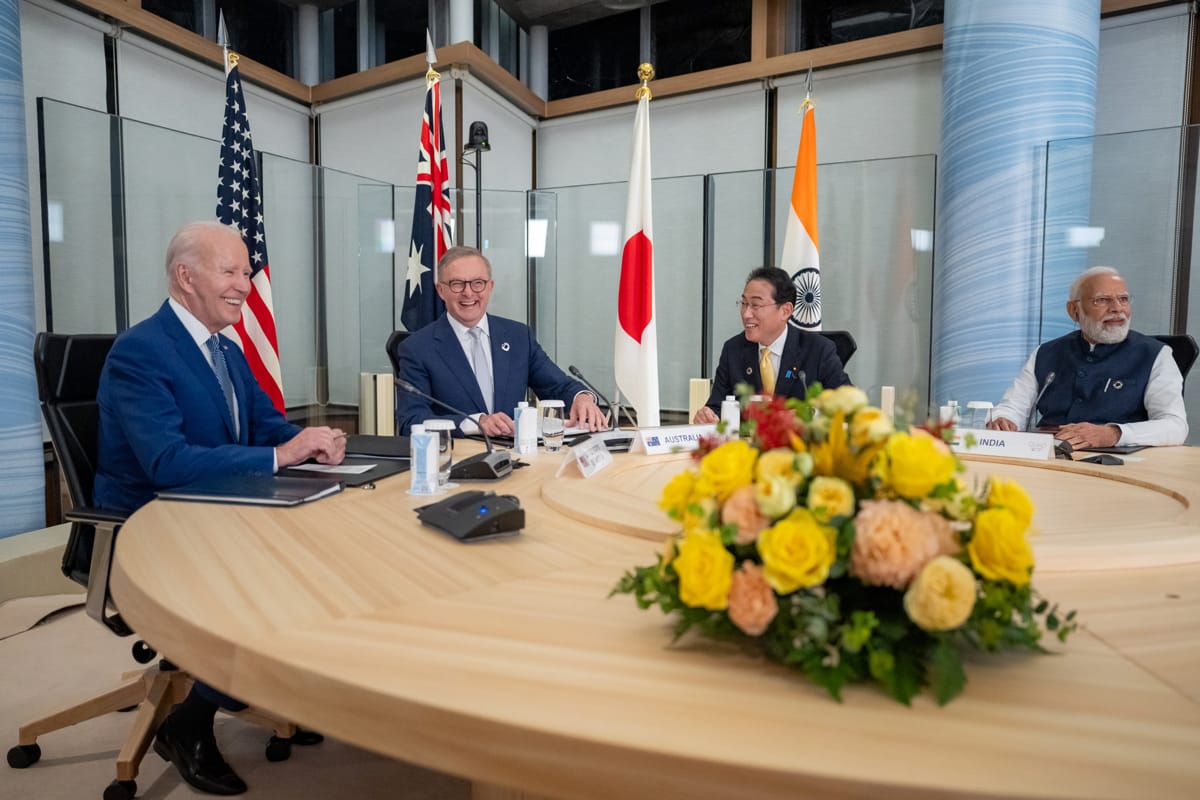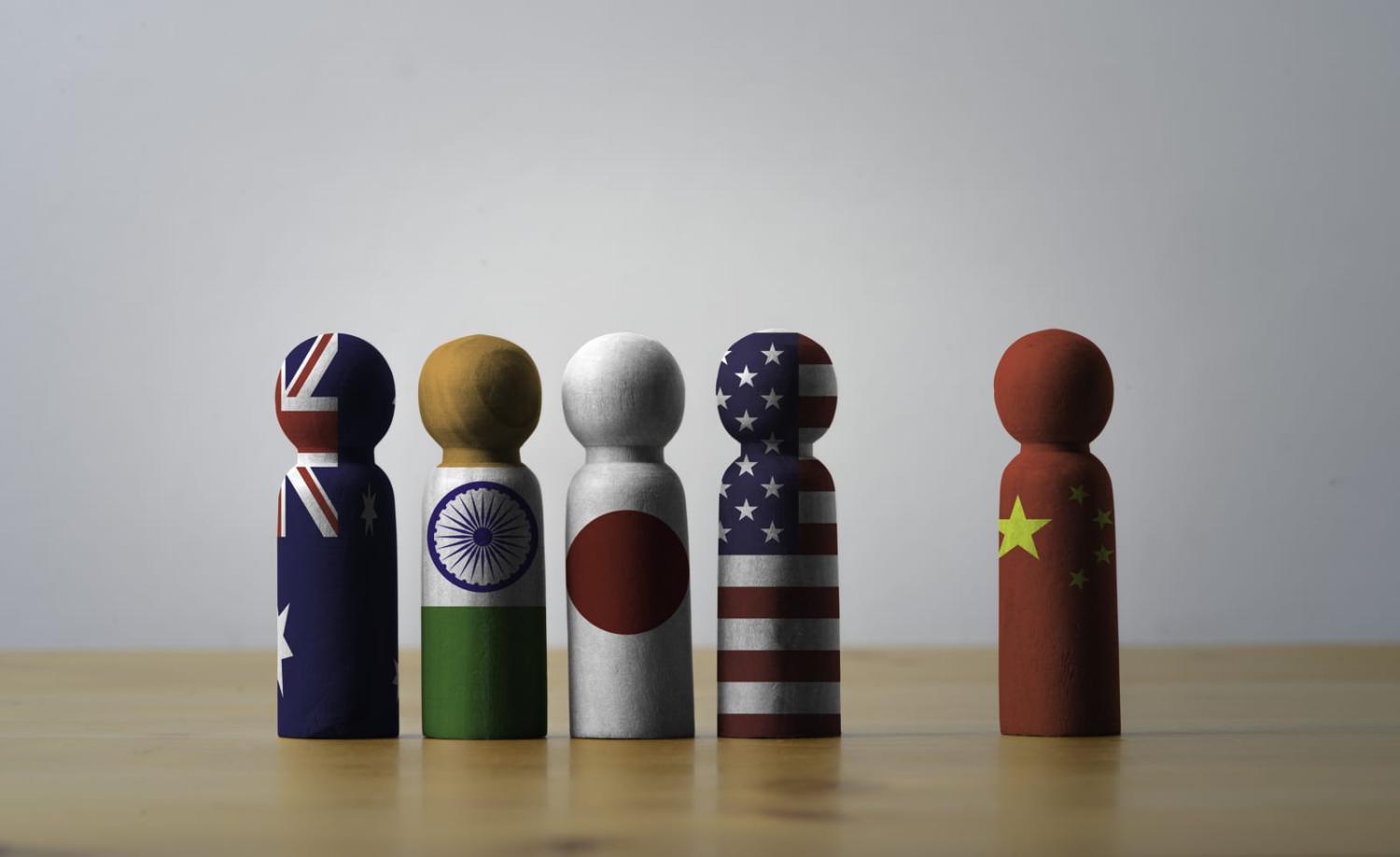Last month, the US House of Representatives passed Strengthening the Quad Act with an overwhelming majority, indicating the critical role the Quad will play in American efforts to engage with the Indo-Pacific. Along with India, Australia and Japan, the four-country grouping has pledged ongoing cooperation.
Understanding how the Quad evolves in the future and navigates tumultuous times requires understanding what binds the Quad today, and how the present iteration of the Quad, which has elevated to a leaders’ summit, differs from its earlier incarnation almost two decades ago, which never rose beyond officials-level meetings.
The four-nation grouping’s antecedents are often traced back to a group coordinating a response to the disastrous “Boxing Day” tsunami in 2004 that struck Sumatra in the eastern Indian Ocean – an ad-hoc grouping with motivations that did not come from traditional alliance formation thinking but simply from the fact that the four had the resources to tackle the crisis and the will to lead relief efforts.
Then Indian Prime Minister Manmohan Singh’s subsequent visit to Japan in 2006 led to an India-Japan “Strategic and Global Partnership” joint statement, noting the usefulness of having a dialogue among India, Japan “and other like-minded countries in the Asia-Pacific region on themes of mutual interest”. In 2007, the Quad’s first-ever meeting took place. Officials from the Quad countries “informally” met on the sidelines of the ASEAN Regional Forum in Manila to discuss how the four could work together. Apart from mentions in legislative meetings, the Quad meeting did not receive any official recognition from the four governments.
The informal meeting seemed to have inflamed China, leading to démarches to the four inquiring as to the reasons behind their meeting. That year, the four countries also participated in an expanded version of the 1992-launched Malabar exercise – twice – first off the coast of Okinawa, Japan, and the other in the Bay of Bengal. Singapore participated in the second iteration as well.
However, as early as February the next year, the Quad had already hit icebergs. Popular narratives emphasise then newly elected Kevin Rudd’s government giving-in to Chinese pressure, leading Australia to pull out from the Quad. Other recent sources, however, highlight that multi-faceted factors informed the disbandment and, therefore, need more exploration of how China’s discontent with Quad countries may have impacted their foreign policy priorities. For instance, the United States wanted to take things “slow” when it came to advancing the Quad’s agenda. The Bush administration’s regional ambitions dictated wanting China engaged – and on its side – in the “six-party talks” regarding North Korea’s nuclear activities, as well as discussions concerning Iran.
Since then, analysts agree that an aggressive China has led to a convergence of threat perceptions across New Delhi, Tokyo, Washington, and Canberra, resuscitating the Quad. In 2017, assistant-secretary-level officials from the four countries met on the sidelines of the ASEAN Summit, discussing terrorism and proliferation linkages and ways to enhance connectivity. India pinned interest in the Quad under its “Act East” policy. The Quad has since upgraded to regular foreign ministerial meetings and subsequently to annual leader-level summits.

The disbandment of Quad 1.0 offers some lessons for Quad 2.0, particularly if doubters remain unclear about what the Quad offers. The Quad’s success will be substantially determined by whether it can deliver on its commitments to regional partners. In this, the present iteration differs substantially from its earlier incarnation in at least two ways.
First, the glue that binds the Quad countries is structural. The Quad countries share a similar vision of the Indo-Pacific, and have the capability to invest resources to work across domains, and offer credible alternatives to the Chinese model in the Indo-Pacific (a term to define the region that China does not affiliate itself with).
From the perspective of India – the only Quad member not a formal US ally – it sees value in engaging with like-minded partners over the shared future of a region in which its growth critically depends. That makes the Quad 2.0 less volatile. The expansion of the Quad agenda year after year indicates the members see value in a long-term investment in the grouping. The expansion is underwritten by the strengthening of bilateral relationships: for example, India’s enhanced ties with the United States, Australia, and Japan across security, defence and economic domains.
Second, the Quad members may each have differing relationships with China but in the past decade or so the stakes of competition have become clear. All share a view that China is adversarial to a certain degree. The United States sees China as a geopolitical rival and adversary, seeking to displace its position in the global order. Japan’s territorial concerns in the South and East China Seas have escalated, while Australia’s deteriorated relationship with China – despite recent rhetoric of “stabilisation” – is telling. Finally, power asymmetry between India and China as neighbours exposes deep mistrust between them.
Together, this makes the Quad a more credible actor today. As Indian analyst Vijay Gokhale put it memorably recently, China recognises that the Quad is not “mere seafoam”. Any contemporary sensitivity about the grouping isn’t a product of China’s reaction – it’s a consequence of China’s behaviour.

